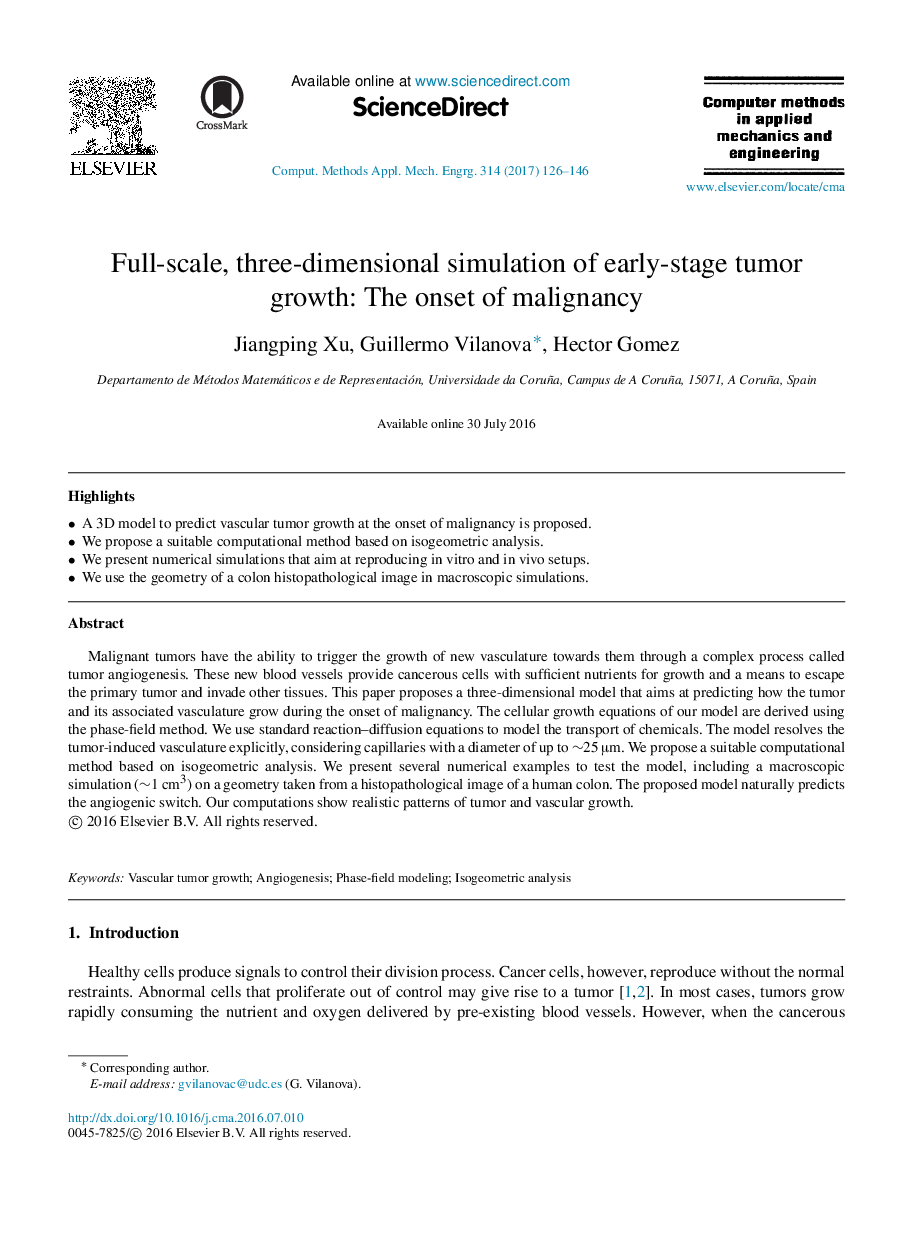| Article ID | Journal | Published Year | Pages | File Type |
|---|---|---|---|---|
| 4964258 | Computer Methods in Applied Mechanics and Engineering | 2017 | 21 Pages |
Abstract
Malignant tumors have the ability to trigger the growth of new vasculature towards them through a complex process called tumor angiogenesis. These new blood vessels provide cancerous cells with sufficient nutrients for growth and a means to escape the primary tumor and invade other tissues. This paper proposes a three-dimensional model that aims at predicting how the tumor and its associated vasculature grow during the onset of malignancy. The cellular growth equations of our model are derived using the phase-field method. We use standard reaction-diffusion equations to model the transport of chemicals. The model resolves the tumor-induced vasculature explicitly, considering capillaries with a diameter of up to â¼25 μm. We propose a suitable computational method based on isogeometric analysis. We present several numerical examples to test the model, including a macroscopic simulation (â¼1 cm3) on a geometry taken from a histopathological image of a human colon. The proposed model naturally predicts the angiogenic switch. Our computations show realistic patterns of tumor and vascular growth.
Related Topics
Physical Sciences and Engineering
Computer Science
Computer Science Applications
Authors
Jiangping Xu, Guillermo Vilanova, Hector Gomez,
